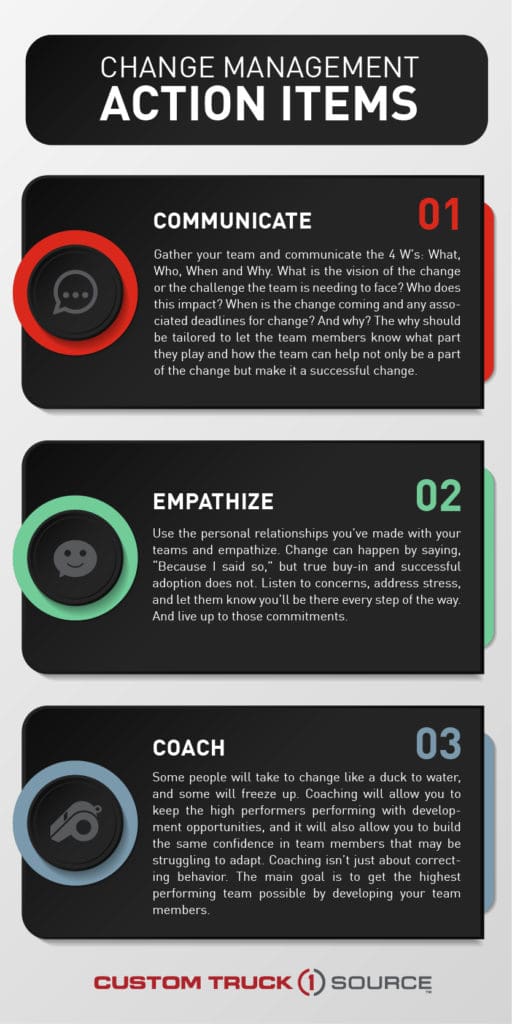
Despite being one of the most used phrases in modern business, change management is not an easy thing to define or even explain. The root of this malleability is at the core of the term: change. Change creates new ideas, processes, and, sometimes, chaos. Our team members change, our products change, and our world changes. For many managers, such changes must feel like trying to hold onto sand as it slips through their fingers. A manager can keep grabbing more sand (new hires, new processes/policies, new clients), but, sometimes, it is trading troubles as the sand continues to shift and fall. There are many change models in the market. Several of them can help break down the process of change so that it at least starts to make sense. However, real change, solid change, needs a binding element, much like water does when making sandcastles on the beach. For change management, that binding element is leadership.
Leadership Skills
Strong leadership skills grounded in communication, emotional intelligence, and coaching allows managers and organizations to bind the sands of change into the structure needed to move forward. Several hot button topics were just thrown out, so let’s dive deeper into the meaning and purpose of each term.
Communication is not just about what is said. We speak 7,000 words a day. Does that mean we’re communicating? Not exactly. It’s important to remember that in terms of leadership the message being received and executed are the priority over what is said. People are complex with different experiences to pull from, and even different languages as a basis of understanding. It’s important to ensure the outcome of the communication attempt stays front of mind and can be executed.
Emotional Intelligence is the ability to perceive one’s own feeling as well as other people’s feelings. This ties into not only how we communicate, but why we communicate. Therefore, a strong leader must develop emotional intelligence to be more effective.
Coaching is the pinnacle combination of communication and utilization of emotional intelligence. It is also a manager’s primary priority. All organizations want quality products or services. They achieve this quality through the development of high functioning team members, which are the result of good leadership and coaching.
What does any of this have to do with change? Everything.
Why Change Management Is Important
Change creates a natural chaos. A change as small as moving the placement of a button inside of a software program creates confusion. Think about what happens when Microsoft comes out with a new version. Yes, everyone knows how to use the fundamentals of Microsoft Word, but what if the ribbon gets re-organized or the function you’re seeking to use is now in a drop-down menu versus a button on the main ribbon? Aggravating, isn’t it?
This is why software and app companies have FAQs and searchable help desk menus. They are communicating the change and breaking down the steps of finding or resolving what the end user is looking for. Now, what would happen if Microsoft didn’t plan to have those FAQs ready before launching the new update? What if not only did they not create the documents but became frustrated you, as the end user, can’t just “figure it out”? No one likes to feel confused or brushed off or even disrespected. Yet, this this is the very reason change has a negative connotation. People want to work well and be productive but change throws a monkey wrench into people’s jobs. Good leadership grounded in clear communication, appropriate attitude and respect, and willingness to coach development and acceptance is exactly what can change…change.
Whether you are changing a button in a software program, changing a product, changing the team leader or team member, or ushering in a whole new way of doing business, the only way to make change sandcastles is by investing in effective leadership development that can influence and bind the entire change initiative together. Considering all the changes that COVID-19 brought to the workplace, leaders and organizations need to stay ahead of change by investing in the people of their organizations.
Change Management Action Items
If you’re ever in doubt how best to handle big changes happening within your organization. you can fall back on these 3 simple actions.


